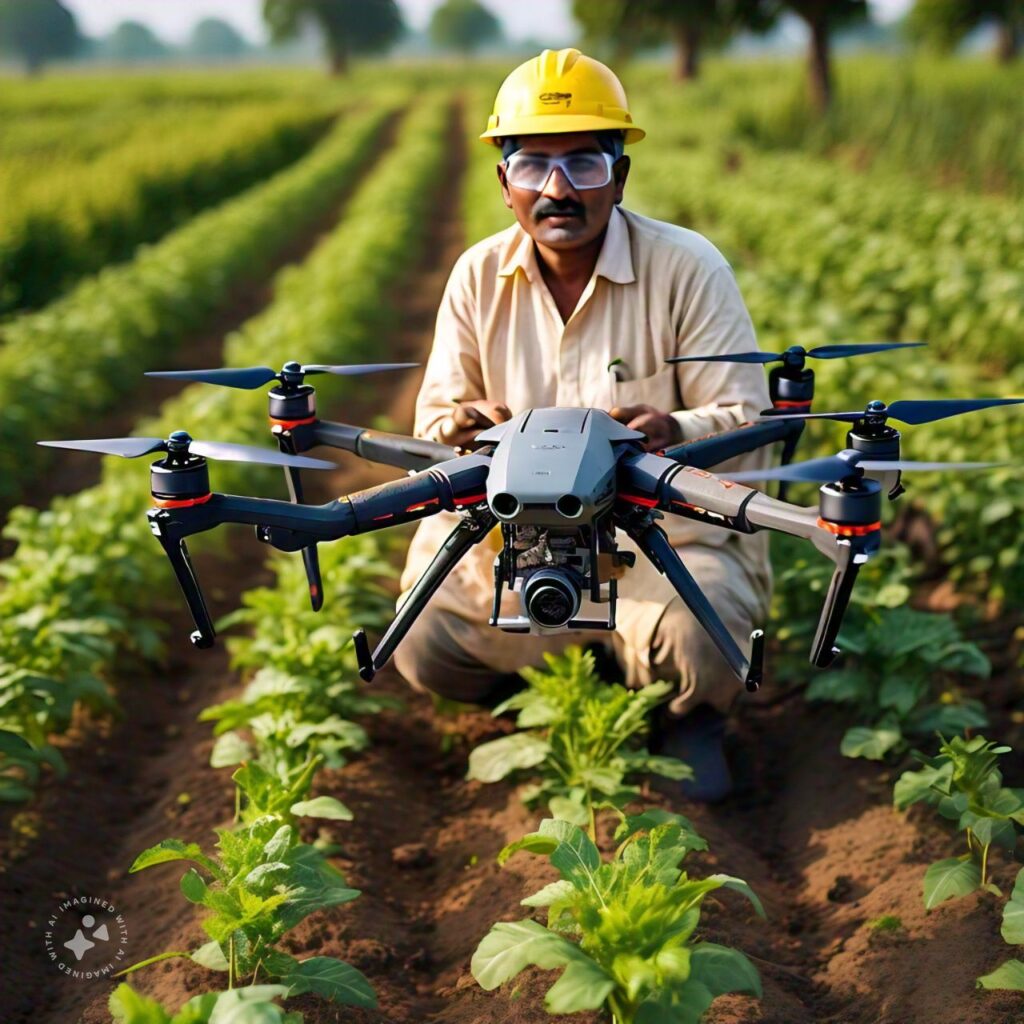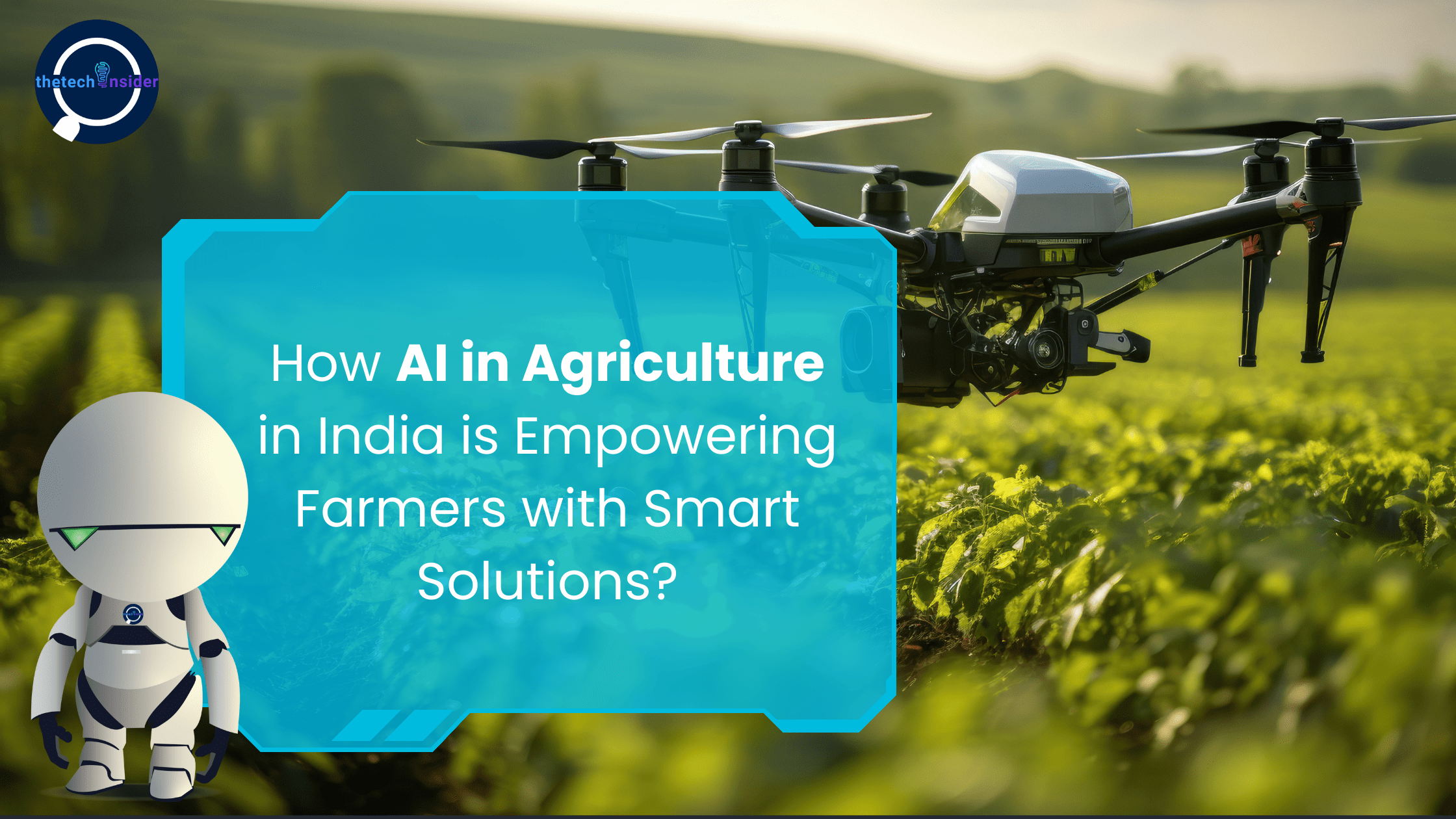India, a land of diverse landscapes and a rich agricultural heritage faces significant challenges in the 21st century. From unpredictable weather patterns and resource scarcity to pest infestations and market fluctuations, Indian farmers need all the help they can get. Enter the revolutionary force of Artificial Intelligence (AI) – a game-changer that’s transforming the agricultural landscape in India.
Table of Contents
Understanding AI and Its Importance in Agriculture
AI refers to the simulation of human intelligence in machines. In agriculture, the application of AI (or “AI in farming” as it’s commonly searched) involves using algorithms and machine learning to analyze vast amounts of data. This data can come from various sources, including weather patterns, soil composition, satellite imagery, and historical crop yield. By crunching these numbers, AI can identify trends, predict outcomes, and offer farmers data-driven solutions for maximizing yield and minimizing losses.
Here’s why AI holds immense importance in Indian agriculture:
- Precision Farming: AI enables precision farming practices, allowing farmers to use resources more effectively. By analyzing soil health data, for instance, AI can guide farmers on the optimal amount of fertilizer application, reducing waste and environmental impact.
- Improved Crop Management: AI can help farmers monitor crop health in real time, detect pests and diseases early on, and recommend the most appropriate course of action. This translates to better crop quality and reduced reliance on chemical pesticides.
- Weather Forecasting and Irrigation Optimization: AI-powered weather forecasting tools allow farmers to prepare for unpredictable weather events and optimize their irrigation schedules. This helps conserve scarce water resources and improve crop resilience.
- Market Price Prediction: AI can analyze market trends and predict future prices for agricultural products. This empowers farmers to make informed decisions about planting, harvesting, and selling their crops, potentially boosting their profits.
How AI is Transforming Indian Agriculture: Real-world Examples
The positive impact of AI in agriculture is no longer theoretical. Several innovative projects are already demonstrating its transformative power:
- Saagu Baagu Initiative: This project, spearheaded by the World Economic Forum’s AI4AI initiative, has empowered over 7,000 chili farmers in Telangana with AI-powered insights. Farmers received personalized advice on planting times, fertilizer usage, and pest control, resulting in doubled income and reduced pesticide use.
- Crop Disease Detection using AI: Startups like De Haat and Plantix leverage AI image recognition to diagnose crop diseases from smartphone photographs. Early diagnosis empowers farmers to take timely action and safeguard their crops.
- Smart Irrigation Systems: Companies like Netafim and Jain Irrigation deploy AI-powered irrigation systems that monitor soil moisture levels and automatically adjust water flow. This promotes efficient water usage, particularly in drought-prone regions.
These are just a few examples of how AI is already making a difference in Indian agriculture.
How to Use AI in Agriculture: It’s Easier Than You Think!

The good news is, utilizing AI in agriculture doesn’t require a Ph.D. in computer science. Shri Arjun Munda, Union Minister of Agriculture and Farmers’ Welfare also suggested tips on how even small-scale farmers can get started:
- Mobile Apps: Numerous smartphone applications incorporate AI features for agriculture. Download apps that offer crop disease detection, weather forecasting, and market price insights.
- AI-powered Chatbots: Platforms like “Kisan e-Mitra” provide farmers with a chatbot interface to access information on government schemes and agricultural best practices in their local language.
- Agriculture Extension Services: Many government and non-profit organizations are actively promoting AI solutions. Reach out to local agriculture extension services to learn about AI tools and training programs available in your area.
Challenges of AI in Agriculture: A Glimpse into the Hurdles
While the potential of AI in agriculture is undeniable, there are challenges to overcome:
- Digital Divide: Limited internet access and smartphone ownership among small and marginal farmers can hinder the adoption of AI tools.
- Data Security Concerns: Privacy concerns and the need for robust data security protocols need to be addressed to ensure farmer trust in AI solutions.
- Language Barrier: Developing AI interfaces and tools in local languages is crucial to bridge the digital divide and empower farmers from diverse regions.
- Initial Investment Costs: The initial investment required for certain AI-powered agricultural equipment might be prohibitive for some farmers.
Smart Solutions Empowering Farmers: The Way Forward
Addressing these challenges requires a collaborative effort. Here’s how we can bridge the gap:
- Government Initiatives: Government policies that promote digital literacy, provide subsidies for AI-powered equipment, and invest in rural infrastructure are critical.
- Public-Private Partnerships: Collaboration between government agencies, tech companies, and NGOs can foster innovation and facilitate the development of affordable, accessible AI solutions for farmers.
- Building Local Capacity: Empowering local entrepreneurs and service providers to develop AI-based solutions tailored to specific regional needs can create sustainable impact.
- Farmer Education and Training: Investing in programs that educate farmers about the benefits of AI and provide hands-on training will encourage adoption.
- Data Privacy and Security: Establishing robust data protection frameworks and building trust among farmers are essential for the successful implementation of AI in agriculture.
Government Initiatives Supporting AI in Agriculture
The Indian government has recognized the potential of AI in agriculture and has taken several steps to promote its adoption:
- Digital India Initiative: This flagship program aims to bridge the digital divide and create a digital ecosystem that benefits farmers.
- National Agriculture Market (e-NAM): This platform provides farmers with real-time market information, enabling them to get better prices for their produce.
- Kisan Drones: The government is promoting the use of drones for various agricultural applications, including crop monitoring, spraying, and seed distribution.
These initiatives, along with others, lay the foundation for a future where AI plays a pivotal role in empowering Indian farmers.
By embracing AI, India has the potential to become a global leader in sustainable and efficient agriculture.
FAQs related to AI in agriculture
Q: Will AI replace farmers?
A: No, AI is a tool to assist farmers, not replace them. It will augment human capabilities and make farming more efficient and profitable.
Q: Is AI expensive for small farmers?
A: The initial investment can be high, but there are affordable AI solutions available. Government subsidies and partnerships can also help reduce costs.
Q: What data is needed for AI in agriculture?
A: Data on weather, soil, crop health, market prices, and farm management practices are crucial for AI applications.
Q: How can farmers learn more about AI?
A: Farmers can attend workshops, webinars, and training programs organized by government agencies and agricultural institutions.
AI is undoubtedly the future of Indian agriculture. By overcoming challenges and leveraging its potential, we can empower millions of farmers and ensure food security for a growing population. Thetechinsider is committed to keeping you informed about the latest developments in this exciting field. Stay tuned for more insights and updates!




